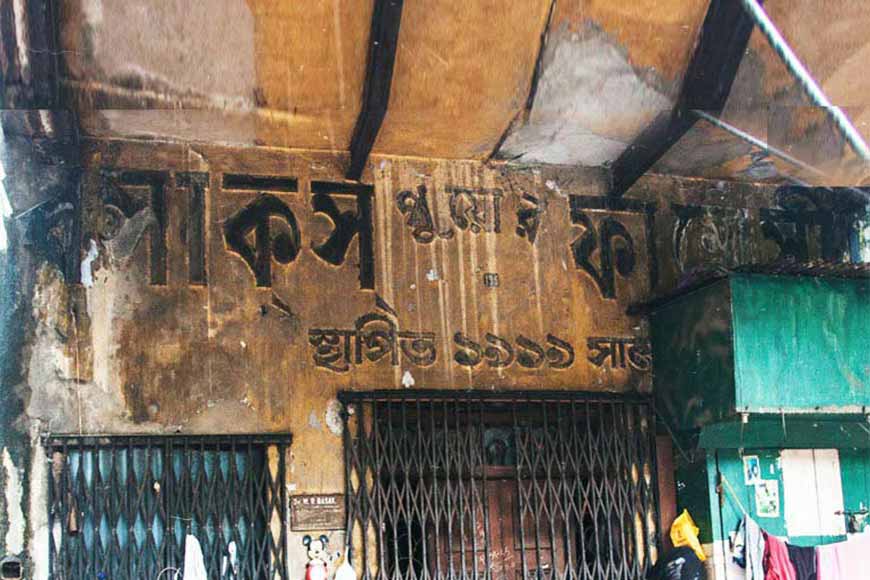Basak’s Poor Pharmacy – Colonial Kolkata’s first charitable pharmacy

Glimpses of colonial India are still visible in the nooks and corners of Kolkata. Time is a tough task master and does not spare the culprit showing irreverence to it. Bidhan Sarani, formerly known as Cornwallis Street in north Kolkata, cuts through the heart of College Street and stretches till Shyambazar in the north. This ‘native’ area was a very prominent part of colonial Bengal. It was the intellectual hub of the city and a large number of educational institutions were set up in this area. Narendranath Dutta, better known as Swami Vivekananda’s ancestral home was on Simla Street, a stone’s throw away from Cornwallis Street. This house has been renovated and transformed into a museum and a cultural centre. After crossing a few buildings down the road, one might just notice a dilapidated two-storied house with a wide, extended porch. Close to the entrance of the house is a faded plaque. ‘Basak’s Poor Pharmacy’ is still faintly legible on the tablet. Below that is written: Established in 1919. Obviously, as the name suggests, this place operated as a charitable pharmacy for the destitute of Kolkata.
After the Battle of Plassey, the British East India Company settled down and established their businesses here. However, the British officials were not used to the sub-tropical climate and came down heavily under the weather with mortality rates rising following bouts of deadly diseases like plague, dengue, kala-azar, cholera and malaria. Hence the British East India Company established the Indian Medical Service (IMS) in 1764 to look after Europeans in British India. Doctors from Britain were inducted as members of IMS and sent to India. But soon the British realized this could not be a long-term solution. So, the government decided to train native youths locally and induct them in the medical service.
The Calcutta Medical College was established in 1835 for this purpose. Native students were imparted training on European treatment procedures. The introduction of western treatment practices in the medical college also opened opportunities for a new profession, that of compounder. The native compounders studied pharmacology and they not only assisted the doctors but also mastered the tricky art of composition, application and mixture of medicines.
Also read : L.Madeira, a 200-year-old mortuary of Kolkata
Gradually, the poverty-stricken natives also realized the efficacy of the modern European methods of treatment, but they did not have money to afford qualified doctors. So, their next best option was to knock at the door of compounders. These paramedics were truly geniuses and showed immense competence in diagnosing and curing ailments with the correct application of medicines. At this juncture, young men from affluent families decided to open charitable dispensaries and provide free treatment to the poor. Here the patients would be diagnosed and treated by qualified professionals who would also provide the necessary medicines for free.
The wealthy Basak family launched the ‘Basak’s Poor Pharmacy’ in 1919. True to its motto, the organization provided service to the hapless poor for decades. Even after Independence, the organization was very active. Till 1980s, this Pharmacy functioned robustly but after that, there was a lull and then the organization folded up for good. However, the plaque is the only remnant of the bygone era that remains plastered to the gray, dusty wall, waiting for its final call.










